Jiyang Dong
CloudBrain-MRS: An Intelligent Cloud Computing Platform for in vivo Magnetic Resonance Spectroscopy Preprocessing, Quantification, and Analysis
Jun 19, 2023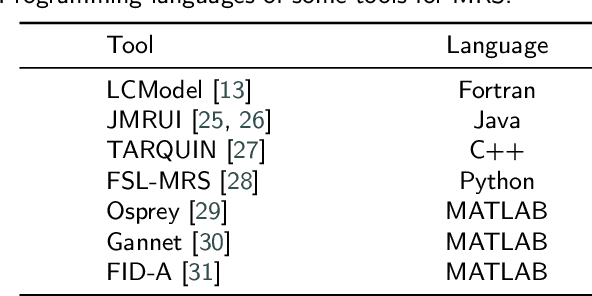
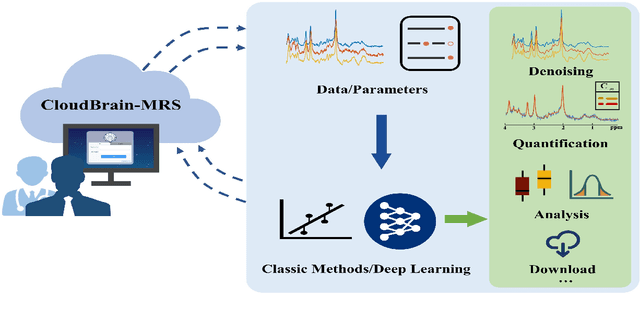
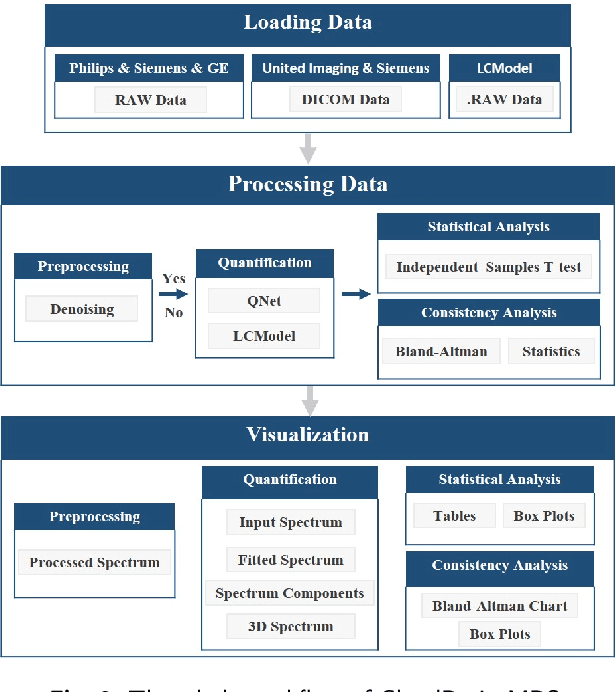
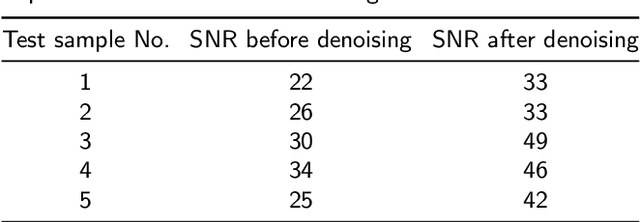
Abstract:Magnetic resonance spectroscopy (MRS) is an important clinical imaging method for the diagnosis of diseases. Spectrum is used to observe the signal intensity of metabolites or further infer their concentrations. Although the magnetic resonance vendors commonly provide basic functions of spectra plots and metabolite quantification, the widespread clinical research of MRS is still limited due to the lack of easy-to-use processing software or platform. To address this issue, we have developed CloudBrain-MRS, a cloud-based online platform that provides powerful hardware and advanced algorithms. The platform can be accessed simply through a web browser, without requiring any program installation on the user side. CloudBrain-MRS also integrates the classic LCModel and advanced artificial intelligence algorithms and supports batch preprocessing, quantification, and analysis of MRS data. Additionally, the platform offers useful functions: 1) Automatically statistical analysis to find biomarkers from the health and patient groups; 2) Consistency verification between the classic and artificial intelligence quantification algorithms; 3) Colorful and three-dimensional visualization for the easy observation of individual metabolite spectrum. Last, both healthy and mild cognitive impairment patient data are used to demonstrate the usefulness of the platform. To the best of our knowledge, this is the first cloud computing platform for in vivo MRS with artificial intelligence processing. We sincerely hope that this platform will facilitate efficient clinical research for MRS. CloudBrain-MRS is open-accessed at https://csrc.xmu.edu.cn/CloudBrain.html.
A Dynamics Theory of Implicit Regularization in Deep Low-Rank Matrix Factorization
Dec 29, 2022Abstract:Implicit regularization is an important way to interpret neural networks. Recent theory starts to explain implicit regularization with the model of deep matrix factorization (DMF) and analyze the trajectory of discrete gradient dynamics in the optimization process. These discrete gradient dynamics are relatively small but not infinitesimal, thus fitting well with the practical implementation of neural networks. Currently, discrete gradient dynamics analysis has been successfully applied to shallow networks but encounters the difficulty of complex computation for deep networks. In this work, we introduce another discrete gradient dynamics approach to explain implicit regularization, i.e. landscape analysis. It mainly focuses on gradient regions, such as saddle points and local minima. We theoretically establish the connection between saddle point escaping (SPE) stages and the matrix rank in DMF. We prove that, for a rank-R matrix reconstruction, DMF will converge to a second-order critical point after R stages of SPE. This conclusion is further experimentally verified on a low-rank matrix reconstruction problem. This work provides a new theory to analyze implicit regularization in deep learning.
CloudBrain-ReconAI: An Online Platform for MRI Reconstruction and Image Quality Evaluation
Dec 04, 2022



Abstract:Efficient collaboration between engineers and radiologists is important for image reconstruction algorithm development and image quality evaluation in magnetic resonance imaging (MRI). Here, we develop CloudBrain-ReconAI, an online cloud computing platform, for algorithm deployment, fast and blind reader study. This platform supports online image reconstruction using state-of-the-art artificial intelligence and compressed sensing algorithms with applications to fast imaging and high-resolution diffusion imaging. Through visiting the website, radiologists can easily score and mark the images. Then, automatic statistical analysis will be provided. CloudBrain-ReconAI is now open accessed at https://csrc.xmu.edu.cn/CloudBrain.html and will be continually improved to serve the MRI research community.
Model-based Synthetic Data-driven Learning (MOST-DL): Application in Single-shot T2 Mapping with Severe Head Motion Using Overlapping-echo Acquisition
Jul 30, 2021
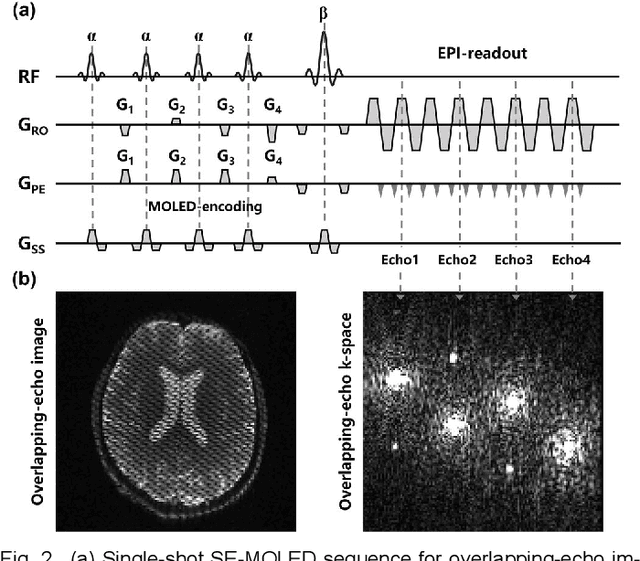
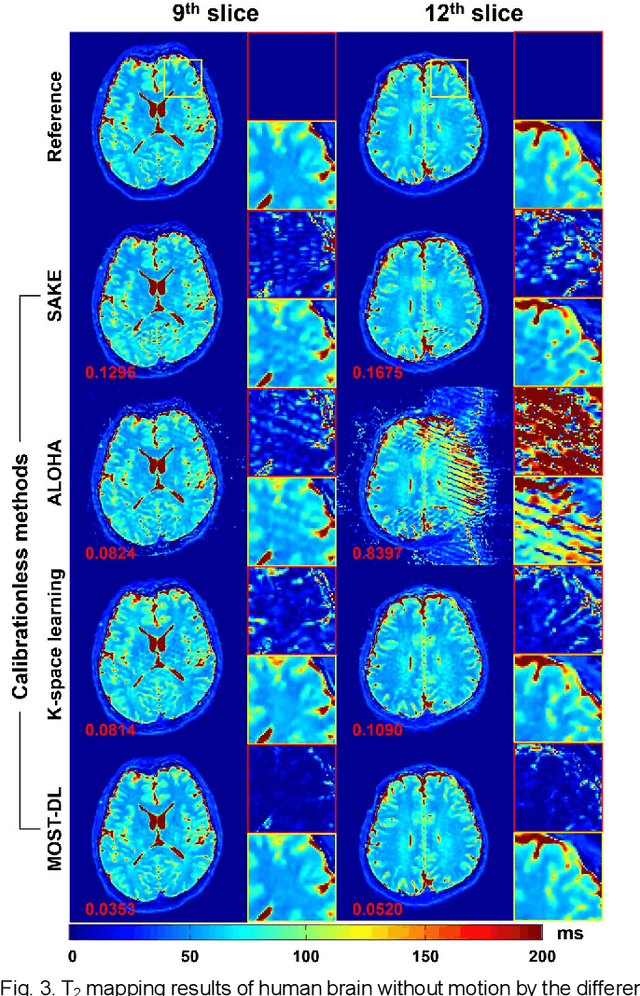
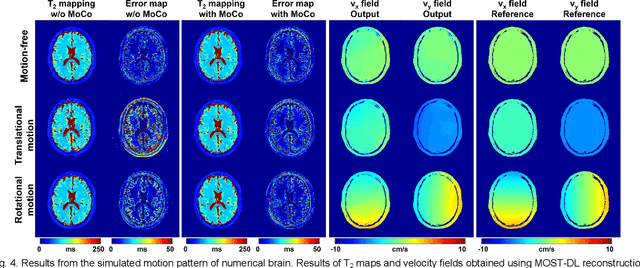
Abstract:Data-driven learning algorithm has been successfully applied to facilitate reconstruction of medical imaging. However, real-world data needed for supervised learning are typically unavailable or insufficient, especially in the field of magnetic resonance imaging (MRI). Synthetic training samples have provided a potential solution for such problem, while the challenge brought by various non-ideal situations were usually encountered especially under complex experimental conditions. In this study, a general framework, Model-based Synthetic Data-driven Learning (MOST-DL), was proposed to generate paring data for network training to achieve robust T2 mapping using overlapping-echo acquisition under severe head motion accompanied with inhomogeneous RF field. We decomposed this challenging task into parallel reconstruction and motion correction according to a forward model. The neural network was first trained in pure synthetic dataset and then evaluated with in vivo human brain. Experiments showed that MOST-DL method significantly reduces ghosting and motion artifacts in T2 maps in the presence of random and continuous subject movement. We believe that the proposed approach may open a door for solving similar problems with other MRI acquisition methods and can be extended to other areas of medical imaging.
 Add to Chrome
Add to Chrome Add to Firefox
Add to Firefox Add to Edge
Add to Edge